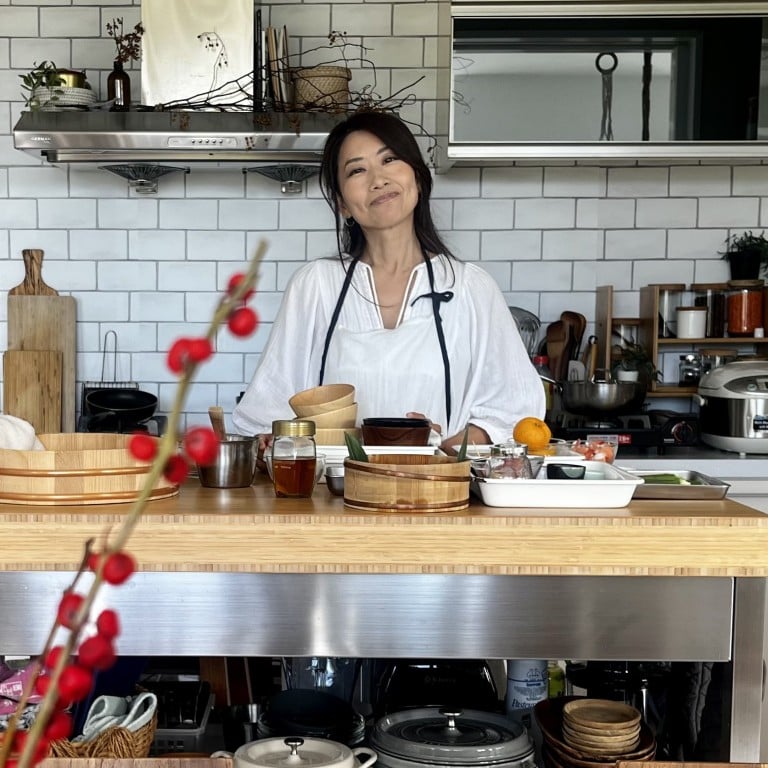
A cookery class in Hong Kong ‘brings people together’: welcome to Yuki’s Table, where you learn to serve up a Japanese feast for the senses
- Yuki Yamagishi’s cookery classes have lured a mix of nationalities and people of all ages and experience to her Sai Kung village house in the New Territories
- Her classes teach how to make Japanese classics such as bite-sized rice balls, crispy tempura, ramen, miso and kimchi, and help keep our ‘connection with food’
Yuki Yamagishi places a bowl of thinly sliced pickled radishes on the kitchen island. The delicate pink discs resemble rose petals, which is handy because she wants to arrange them into a flower shape on top of a tiny rice ball.
Welcome to Yuki’s Table Hong Kong, where Yamagishi’s cookery classes are more like art lessons. Her food and table displays are posted on Instagram under the handle @yukistablehongkong.
People kept asking me to show them how to cook Japanese food, so it started that way
With its warm wood decor and views of verdant countryside, her home oozes calm. Birdsong and a playlist heavy on indie music pierce the silence.
“There’s a lot of pre-class preparation but because I love hosting it doesn’t feel like I’m working,” says Yamagishi. “People appreciate the work that goes into each class and that’s rewarding.”

Her classes have lured a mix of nationalities – “my door is open to everyone” – but for one held on a warm Friday in January, six of the seven students are Hongkongers, which is not surprising considering the city’s love for Japanese culture.
There is also regular student Shadow Kwan, a stylist and entrepreneur who is featuring Yamagishi in her upcoming lifestyle book.
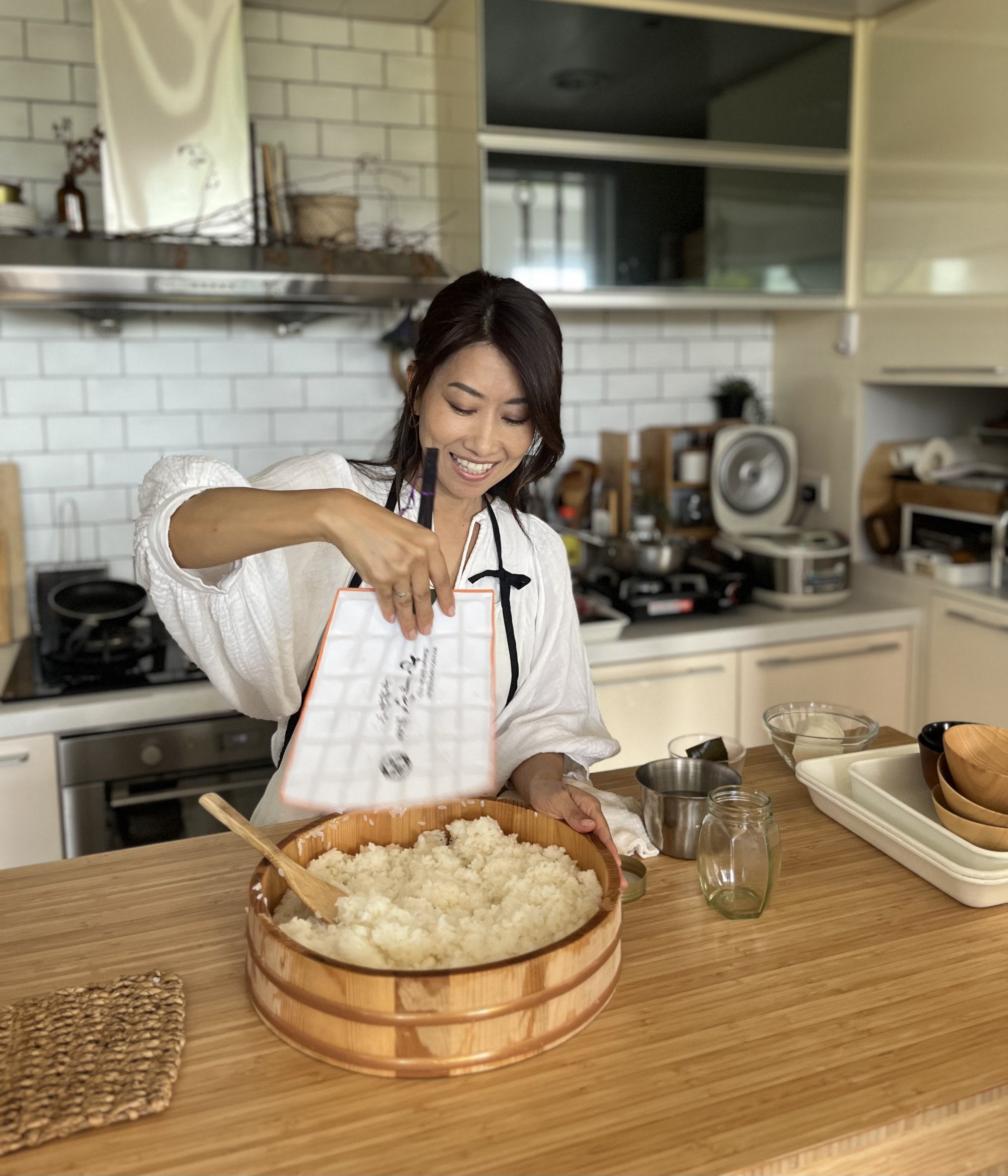
“That’s what I love about my classes,” says Yamagishi, who hosts three to four each week. “You meet people from different creative backgrounds.”
Today’s menu has temari sushi – colourful bite-sized rice balls – taking centre stage and, to get the ball rolling, her students shape 48 of them. Later they are topped with ingredients such as salmon, tuna, radish and scallops. Some are wrapped in pork loin and fried in a sweet garlic and soy glaze.
Common foods to batter include sweet potato, aubergine, pumpkin, squid and shrimp, but today Yamagishi opts for okra.
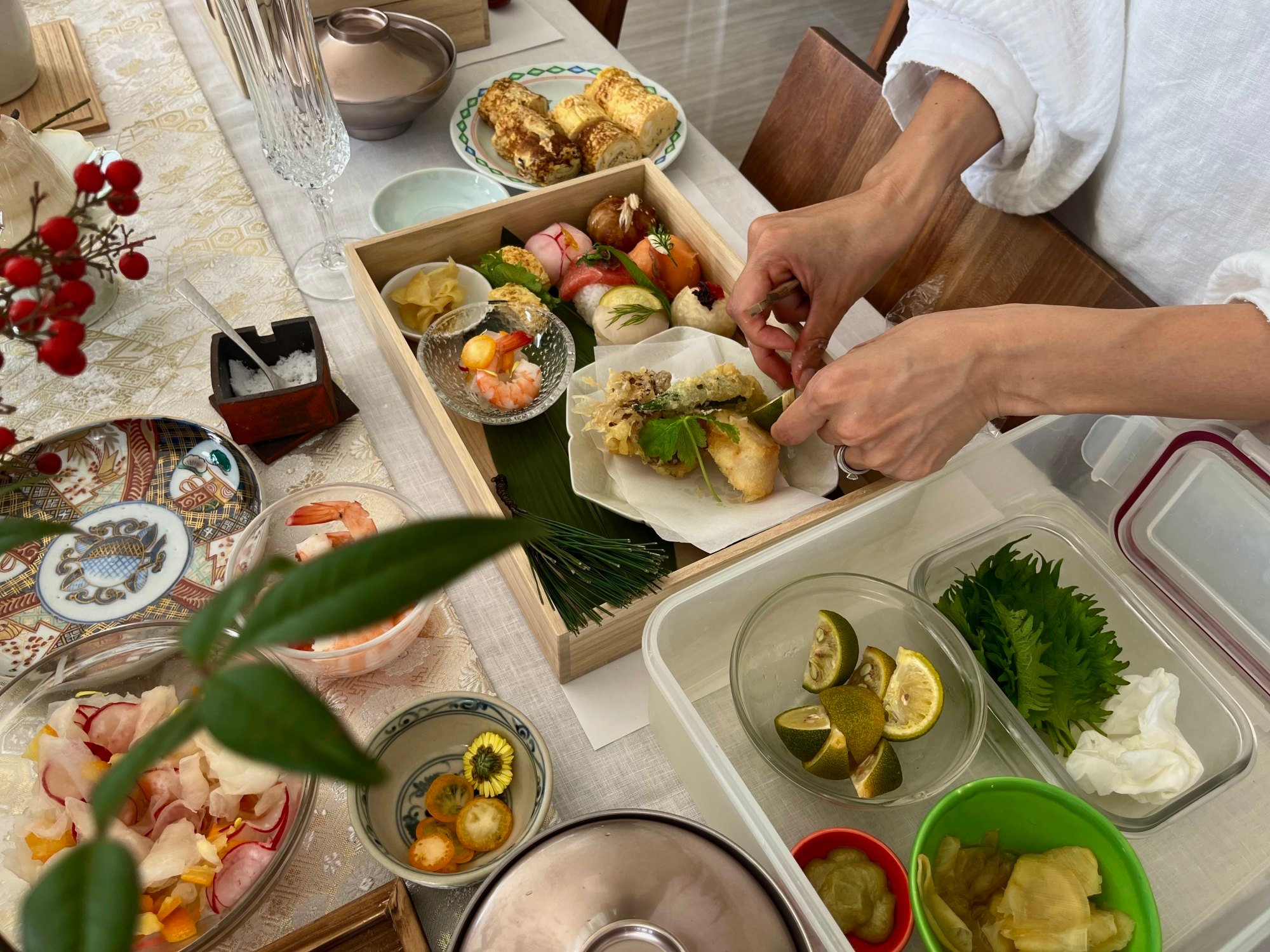
Eight sashimi-grade scallops also get the tempura treatment, but the star of this fry fest is the maitake cooked with chunks of pancetta.
Maitake means dancing mushroom in Japanese, the name given because people danced with joy when they found it growing in the wild. When served in a light, crispy batter, the flavour boosted by pork belly fat, you too might break out into a jolly jig. What makes the class so special is that it arouses all the senses.
While the refined nature of Japanese cuisine – where as much importance is given to the food’s aesthetic arrangement as to its taste – might intimidate some, Yamagishi’s calming presence ensures her students are relaxed.
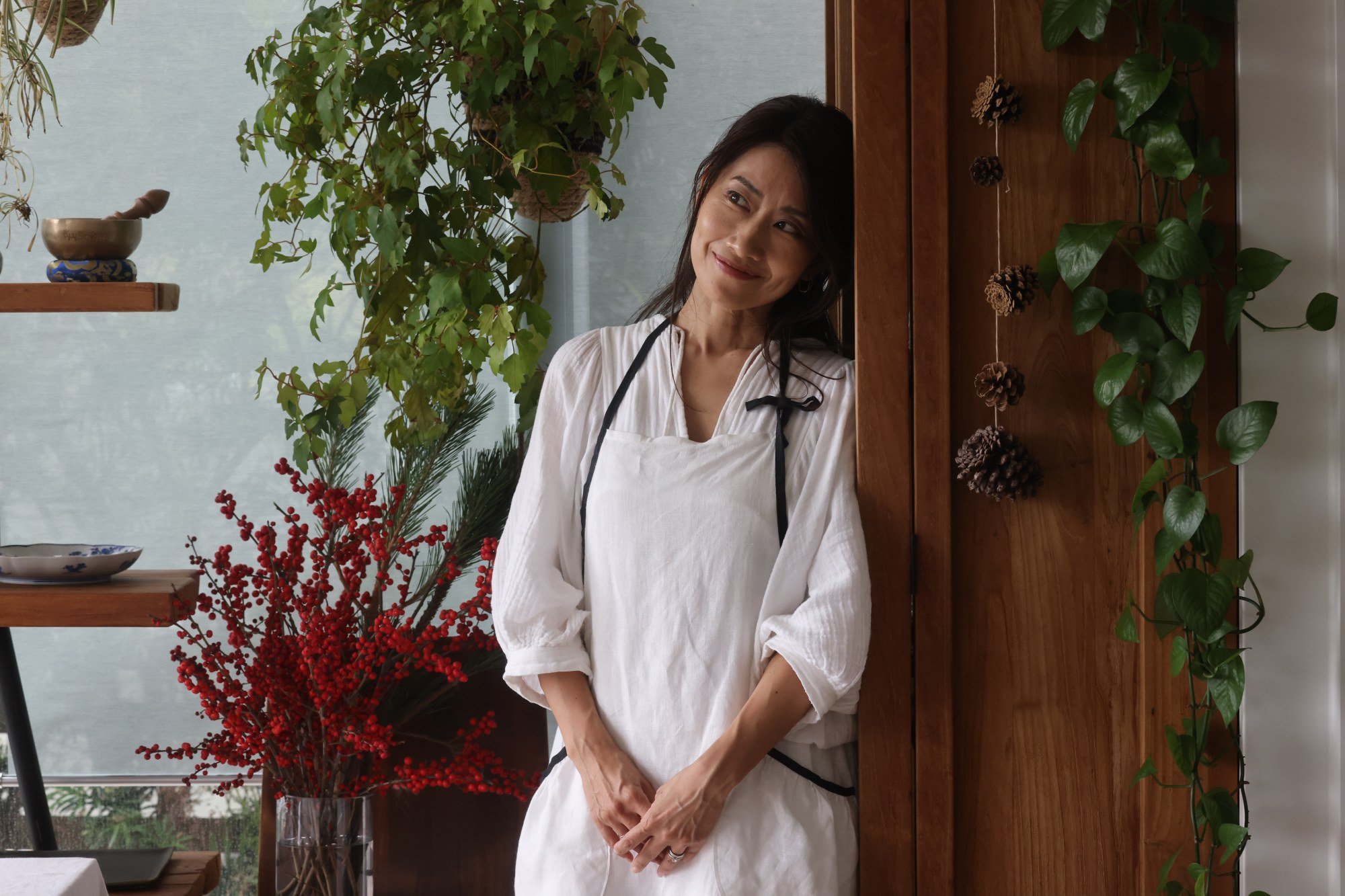
Participants get to take home the recipes they’ve learned, and the tips on technique Yamagishi has dished out – for example, that to make perfect tempura the batter must be cold so the wheat gluten is not activated, and that it must be stirred only 10 times.
Do not forget to scoop out the chunks of batter (they are called tenkasu) that bob around in the pot after each individual fry, warns Yamagishi. Nobody wants burned bits spoiling the rice bran oil.
And nobody wants soggy tempura, so all the ingredients must be dried with a paper towel before coating them with batter to remove excess moisture, she adds. Overcrowding the oil with ingredients is also a no-no.
“You know when the oil is hot enough (160 to 180 degrees Celsius or 320 to 356 Fahrenheit) by dropping some batter into it with chopsticks – it should sink to the bottom and then quickly float to the surface,” Yamagishi says.
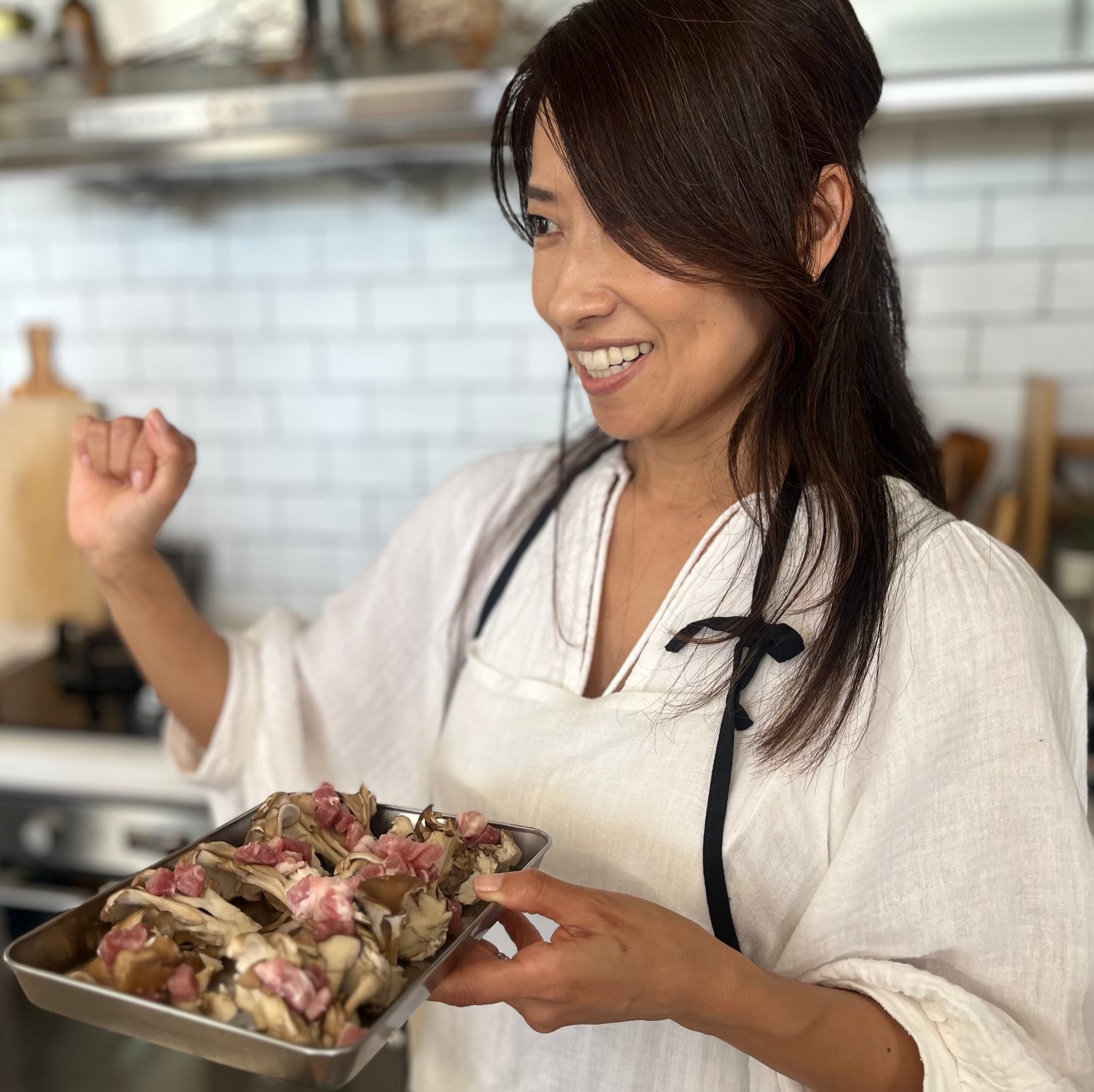
With so much effort and preparation required, it is obvious that this is not everyday Japanese cooking but a menu to celebrate New Year and other special occasions. It has a sentimental place in Yamagishi’s heart.
“When we gather as a family for New Year's, with three sisters together, we love rolling the small sushi balls,” she says. “Rolling and chatting to make the cutest sushi … it brings people together.”
Food is central to Yamagishi’s Hong Kong life, but that was not always the case. In Japan, she worked in the airline industry before moving to Hong Kong in 2009 with her Canadian husband.
“I had a child when I moved here, so I was looking for something that I could do at home. I didn’t want to leave him with a helper … it’s a different culture,” says Yamagishi, now the mother of two sons.
Living in Sai Kung, she attended dinner parties where a variety of cuisines were served – Italian, Lebanese, British, Japanese. “People kept asking me to show them how to cook Japanese food, so it started that way,” she says.
Social media and word of mouth are her most powerful marketing tools.
A desire to cook healthier meals steered her down the home cooking path. “My son was diagnosed with bronchitis aged just four, so I started looking into diet and the importance of healthy eating and where our food comes from.”
“It’s easy to lose our connection with food and the sense of seasons,” she says.
Most of the ingredients for her classes are sourced locally. “The ingredients have to be accessible,” she says.
To wrap up today’s class, Yamagishi pours cups of obukucha, a soul-warming tea with salted plum and kelp that is traditionally drunk in Japan to celebrate New Year’s Day.
“We drink this tea to bring good health and happiness for the coming year,” she says.

